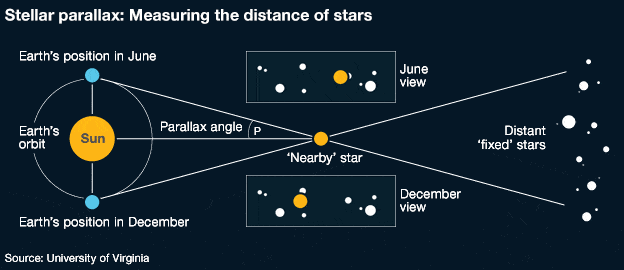The team working with the Gaia space telescope has just released the first batch of the data they’ve recorded — and it’s huge. The craft has seen over a billion stars and measured the distance to and sideways motion of two million of them.

Gaia is ESA’s space observatory launched in December 2013 — the best craft of its kind humanity has ever constructed. Its mapping efforts are still several years to completion but the data it beamed back is on a scale far greater than anything we’ve had access to before. On Wednesday, ESA released a huge set of data comprising 1.1 billion light sources. Out of these, roughly 400 million are objects never before recorded.
“You’re imaging the whole sky in basically [Hubble] space telescope quality and because you can now resolve all the stars that previously maybe looked as though they were merged as one star at low resolution – now we can see them,” explained Anthony Brown from Leiden University, Netherlands.
“Gaia is going to be a revolution,” said Gerry Gilmore from Cambridge University, UK, was one of the mission’s proposers. “It’s as if we as astronomers have been bluffing up until now. We’re now going to see the truth.”
The treasure trove of data is so huge that scientists say they won’t to be able to analyze all of it — so they’re appealing to the public to join in and discover the great unknown. A web page has been created where anyone can play with Gaia data and look for novel phenomena.
Gaia’s goal was to improve on the work of Hipparcos, the first high-precision astrometry satellite, launched in 1989. At the time Hipparcos’ catalogue of the Milky Way became the go-to chart of this corner of the Universe, detailing the precise position, brightness, distance to and proper motion of 100,000 stars. Gaia increased that number twenty-fold — and this is only the first part of the data.
Astrometry is the art of calculating the position and movement of celestial bodies hundreds, thousands, even millions of light years away starting from distances we can measure — the distance between two points on Earth’s orbit, for example. As our planet orbits the Sun, relatively nearby stars seem to move against the seemingly fixed stars farther away. So, we can use the parallax angle to calculate the distance to these target stars.
Because the ratio between the distances we know and those we’re calculating is so huge these angles are tiny — under one arcsecond (1/60 of a degree) for the nearest stars. Parallax measurements are used as references to correct more indirect techniques of measuring these huge distances, so Gaia is programmed to take repeated measurements for each star to reduce errors to under seven micro-arcseconds — an error the size of a one euro coin on a Moon-Earth distance.
The craft carries two sets of optical telescopes, which project their light on a one-billion-pixel camera detector connected to a trio of instruments. This technological fortitude allows Gaia to pick out stars more accurately than anything we’re ever constructed before. It uses all this information to measure details such as the temperature and composition of the stars, which can be used to determine their age.
Getting an accurate reading over such distances is tricky, so repeated viewings of each point are required.
All in all, the mission is expected to take five years to complete but once over it’s estimated Hipparcos’ 100,000-strong catalogue will expand to over one billion objects. But after seeing the data it became apparent that Gaia is picking up many more faint light sources that we’ve anticipated, so that number could climb as high as two to three billion objects.
Not all of these will be actual stars. Quasars, planets, distant galaxies — they’re all here. In particular, by looking at how the stars Gaia picked up “wobble” through the sky, astronomers can predict the existence of worlds orbiting them.
“Gaia is going to be extremely useful for exoplanets, and especially systems that have the Jupiter kind of planets,” said Esa’s Gaia project scientist, Timo Prusti.
“The numbers are going to be impressive; we expect 20,000. The thing is, you need patience because the exoplanets are something where you have to collect five years of data to see the deviation in the movements.”
Another goal of the Gaia mission is to measure the radial velocity of stars — the movement they make towards or away from the craft as they move around the galaxy. Compare this with the stars’ proper motion, and it will give us a glimpse into the dynamics of the Milky Way.

Before the mission’s launch, scientists had hoped to get radial velocity data on about 150 million stars. Soon after the satellite’s launch, however, scientists realized that there was a lot of stray light reaching the camera, which impaired its observation of the faintest stars and their colors. Engineers think this is caused in part by the way sunlight bends past the 10m-diameter shade that Gaia uses to keep its telescopes shaded. They say that the more time the mission runs, the closer Gaia will get to its target.
“Clearly, with the stray light we lost sensitivity. On the other hand, it happens to be that there are more stars than were thought before. So we’re still talking about 100 million radial velocities,” Timo Prusti told BBC News.







